AUTHOR Q&A: Why Every Reopening School Should Embrace Mediation
July 21, 2020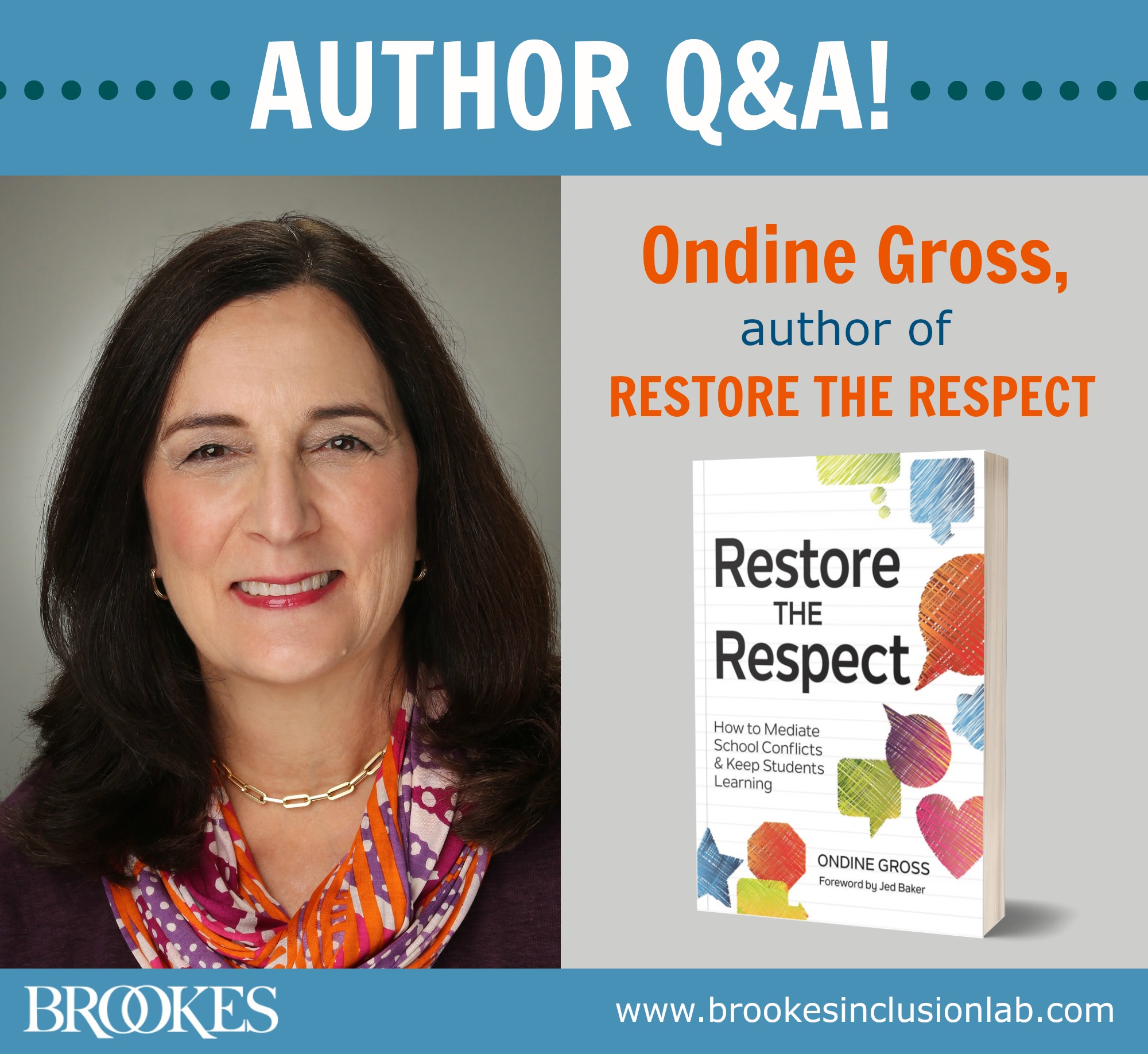
*Before we get to today’s post, a bit of business: the lucky winners of last week’s UDL book giveaway are…
Jessica Muniz
Michelle Sewyck
Leigh Rohde
Congratulations! We will be in touch for your addresses so we can send you your winnings. Happy reading!
And now back to today’s scheduled author Q&A…
When school reopen their doors—whenever that may happen, and whatever the reopening might look like—your returning students will have spent six months or more navigating the complex challenges of life during a global pandemic. Some may have had family or friends affected by the virus. Some may have seen their families struggle due to lost income or the need to juggle parenting with full-time work from home. Some may have faced challenges due to equity issues like food insecurity and lack of internet access. And nearly all of your students will have cycled through difficult emotions: fear, anxiety, stress, anger, loneliness from months of relative isolation.
In the months after schools reopen, sensitive behavioral and social-emotional support will be among your most important priorities as an educator. Over the next few weeks, the Inclusion Lab will be running Q&As with Brookes authors who have insights to share about conflict resolution, behavior support strategies, and trauma-sensitive teaching practices.
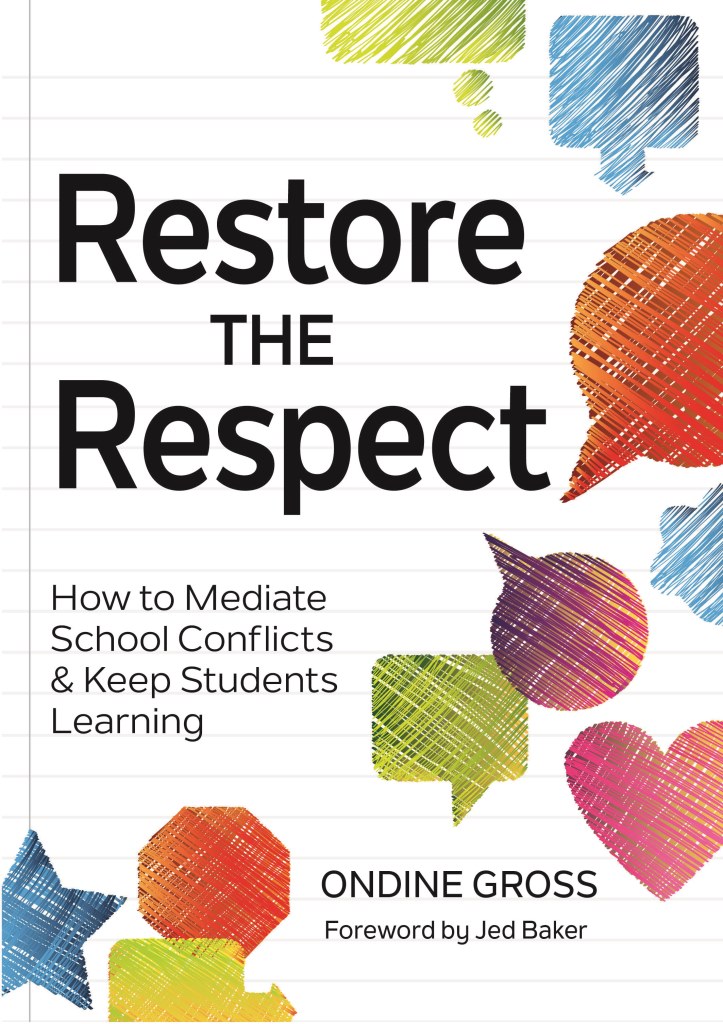 Today we’re bringing you a Q&A with Ondine Gross, author of Restore the Respect, to talk about the mediation approach to conflict resolution that she describes in her book. Read on to discover how structured mediation sessions work—and how this approach can help teachers deal with a potential uptick in challenging behaviors, achieve a more racially equitable classroom, and more. (And stay tuned over the next few weeks for more guidance from trauma expert Jen Alexander and new Brookes author Dyane Carrere.)
Today we’re bringing you a Q&A with Ondine Gross, author of Restore the Respect, to talk about the mediation approach to conflict resolution that she describes in her book. Read on to discover how structured mediation sessions work—and how this approach can help teachers deal with a potential uptick in challenging behaviors, achieve a more racially equitable classroom, and more. (And stay tuned over the next few weeks for more guidance from trauma expert Jen Alexander and new Brookes author Dyane Carrere.)
Q. For anyone who might not be familiar with the concept of mediation in schools, could you briefly describe the model you introduce in Restore the Respect?
A: First a little background: Mediation is a time-honored practice of a third party (mediator) assisting two people as they resolve their conflict or misunderstanding. Mediations are structured and follow principles that include voluntariness, confidentiality, self-determination, and an impartial mediator. Restore the Respect introduces four ideas for K-12 schools:
- Use existing adult staff members as mediators. Restore the Respect provides a comprehensive overview and guidance so that school counselors, social workers, teachers, and other staff can learn how to mediate.
- Make mediation a common practice to strengthen and repair relationships between teachers and students. Small and large misunderstandings often derail teacher-student relationships. Mediation provides a way for a teacher and student to go beyond a one-dimensional understanding of one another.
- Use mediation to address student conflict and bullying. With an eye for when mediation is appropriate, having a staff of adults who can offer mediation before conflicts lead to classroom disruptions and fights is impactful.
- Address adult conflicts in schools through mediation. Schools bring together a wide variety of adults from diverse backgrounds and different educational philosophies. Mediation is a way to resolve conflicts and offer a path forward.
The format for school mediations is simple: both parties voluntarily sit down with the mediator and answer the question, “What brought us here?” Each person tells their full story to the mediator with the second party listening. What they choose to talk about is up to them, and the mediator asks questions to clear up misunderstandings. The mediator also “mines for gold” by asking each party to share positive observations. Once the mediator has summarized what each person said, they are invited to speak directly to each other to develop a plan to move forward. The format is simple and game-changing because as new insights emerge, understanding is deepened, and often trust and empathy are generated. There are also spontaneous moments of apologies, forgiveness, and grace.
Q: Why is mediation more effective than traditional approaches to conflict resolution?
A: Traditional school discipline works as follows: If students misbehave, they are sent to the office, spoken to by a school administrator, and given a consequence. The teacher is often left out of the loop. When the student returns to the classroom, it’s as though nothing has happened—but something did happen, and resentments linger. Meanwhile, nobody gained insights, no relationships were improved, and students did not have the opportunity to practice effective social, communication, and problem-solving skills.
Restore the Respect fills an important gap. What caused the problem in the first place? How will students acquire the communication skills needed to prevent future problems? How will teachers acquire insights into how a child can thrive in their classroom? We don’t know until we ask, model appropriate problem-solving skills, and listen.
Mediation empowers the teacher and student to repair their relationship and develop their own solutions. I conducted over 200 teacher-student mediations and was pleasantly surprised at how much can be accomplished in one 50-minute meeting. Teachers and students care about making things better, or else they would not agree to come to this voluntary meeting. Restore the Respect shows data derived from three years of teacher-student mediation at a midsize high school—and a full 82% of students who participated in teacher-student mediation had no further disciplinary referrals from that teacher.
Q. When schools reopen—whether that happens in the fall or later—students will be dealing with complex emotions and teachers may see more challenging behaviors in their classrooms. Why is mediation an especially important approach for teachers to adopt at this specific time?
A. First, let’s remember that educators are heroes! They will indeed face children who will have had a wide range of experiences, including the death of family members. Many teachers will wisely focus on using the first days and weeks of the semester to build a “community of care” in their classrooms by doing activities that foster trust and rapport. Some teachers may wish for the return to school to feel “normal” and focus on academic subjects. Many will do a combination of both.
Here is what all teachers know: not all students respond the same way, there is no one-size-fits-all guide for how to effectively teach every student, and even experienced teachers can have difficulty connecting with all students. When background, race, socio-economic status, gender/LGBTQ+ identity, ability/disability, and English language proficiency are factored into the relationship, some challenges with connection may occur. Mediation is an excellent way to for a teacher and student (or two students, or two adults) to have a safe time and place to learn about one another, hear each other’s perspectives, express caring for one another, and move forward. Restore the Respect is filled with examples of how this is done.
It’s also important to point out that school mediations need not only occur to resolve conflicts. As mediation becomes embedded in school culture, teachers will use it as a “go-to” in order to have a safe place to communicate with a student. For example, when a teacher notices a change in a student’s demeanor, they may wonder if it’s something they said or did. Mediation provides a safe way to have a deep conversation away from the hubbub of a busy classroom.
Q. Recently there’s been a lot of discussion about how schools can work more effectively toward racial justice and equity. I know this is a topic you cover in Restore the Respect. Can you talk about how mediation helps teachers who are working to make their classrooms more equitable?
A. Show me a racially just and equitable school, and I will show you a healthy environment where resources are available and accessible to all, school discipline is meted out fairly, there is a high level of trust between the school and community, and all students are nurtured and feel cared for.
We are not there yet. Black males and students with disabilities are the most heavily impacted by discipline policies that remove them from the classroom (Klotz, 2014). Differences in how teachers discipline black and white students contribute to racial disparities and spur repeated student misbehavior among black students (Okonofua & Eberhardt, 2015).
All students learn best when they believe their teacher cares about them, but when a teacher-student relationship derails, it can be hard to get it back on track. “She sent me out when other people were talking!” is a line I heard hundreds of times as a school psychologist. Was the teacher being unfair? Was there implicit bias at work?
I’ll share some data from Restore the Respect: Teacher-student mediation was introduced as a Tier II intervention in a multi-tiered system of supports in a diverse school of approximately 1,450 students. Three years of data indicate that an average of 72% of mediations were performed with African American students and white teachers. And as I mentioned before, a three year average of 82% of students who participated in mediation had no further disciplinary referrals from their teacher. This suggests that mediation boosts understanding across racial backgrounds. A survey of student reactions to mediation indicated 100% satisfaction.
One administrator put it this way in Restore the Respect: “As an African-American administrator who witnesses the disproportionate number of black male referrals, [teacher-student mediation] has been my most useful go-to tool besides what I myself do. This has been a very useful intervention because it has evened the playing field by not giving the teacher the bigger platform or all the control in the meeting. The students feel like they have a voice if they want to get some things out they feel frustrated about. It teaches a lifelong skill of how to solve problems.”
Q. In your experience, what’s the biggest reservation a school or teacher might have about adopting mediation as a conflict resolution approach? And what would you say to counter that reservation?
A. When teacher-student mediation was introduced to my diverse, public high school of nearly 1,450 students and more than 100 faculty, I was expecting a backlash, but it never came. In fact, this new idea was welcomed because it was widely recognized that repeatedly sending a student from class created a loss of instructional time and ongoing school failure. Assigning detentions and disrupting a parent’s work schedule for a conference was not always effective either. Both teachers and administrators were seeking fresh ideas, and introducing mediation was common sense.
As a principal said in Restore the Respect, “Strategies about how to get teacher buy-in and deal with teacher resistance aren’t necessarily needed if the thing you are doing has a chance to breathe and then is obviously and undeniably successful. And so I think what happens with teacher-student mediations is they become their own best advertising tool. They’re just working. I’ve never, ever, heard a teacher complain about it.”
To obtain feedback from teachers, we conducted a survey of the teachers that participated in mediation. Teachers were frank, offering criticism and praise. On all survey questions, the majority found mediation helpful, respectful, and something they would recommend to others. 87% replied “true” to the following statement: “The addition of teacher-student mediation is a positive step toward improving student behavior and learning.”
Thanks to Ondine Gross for sharing the basics and benefits of mediation today. For extensive guidance on how to put this approach into practice in your classroom…
EXPLORE THE BOOK
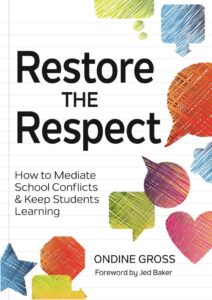 Restore the Respect
Restore the Respect
How to Mediate School Conflicts and Keep Students Learning
Discover an easy, effective, and evidence-based mediation technique for teachers and students in Grades K-12. This common-sense solution to conflict resolution will help you reduce suspensions and keep students in the classroom and ready to learn.
LEARN MORE
WATCH FREE WEBINARS WITH ONDINE GROSS
How Mediation Restores the Respect
Introducing Restorative Teacher-Student Mediation
This Q&A originally appeared in the Brookes K-12 Education newsletter. Sign up for it today if you haven’t already!

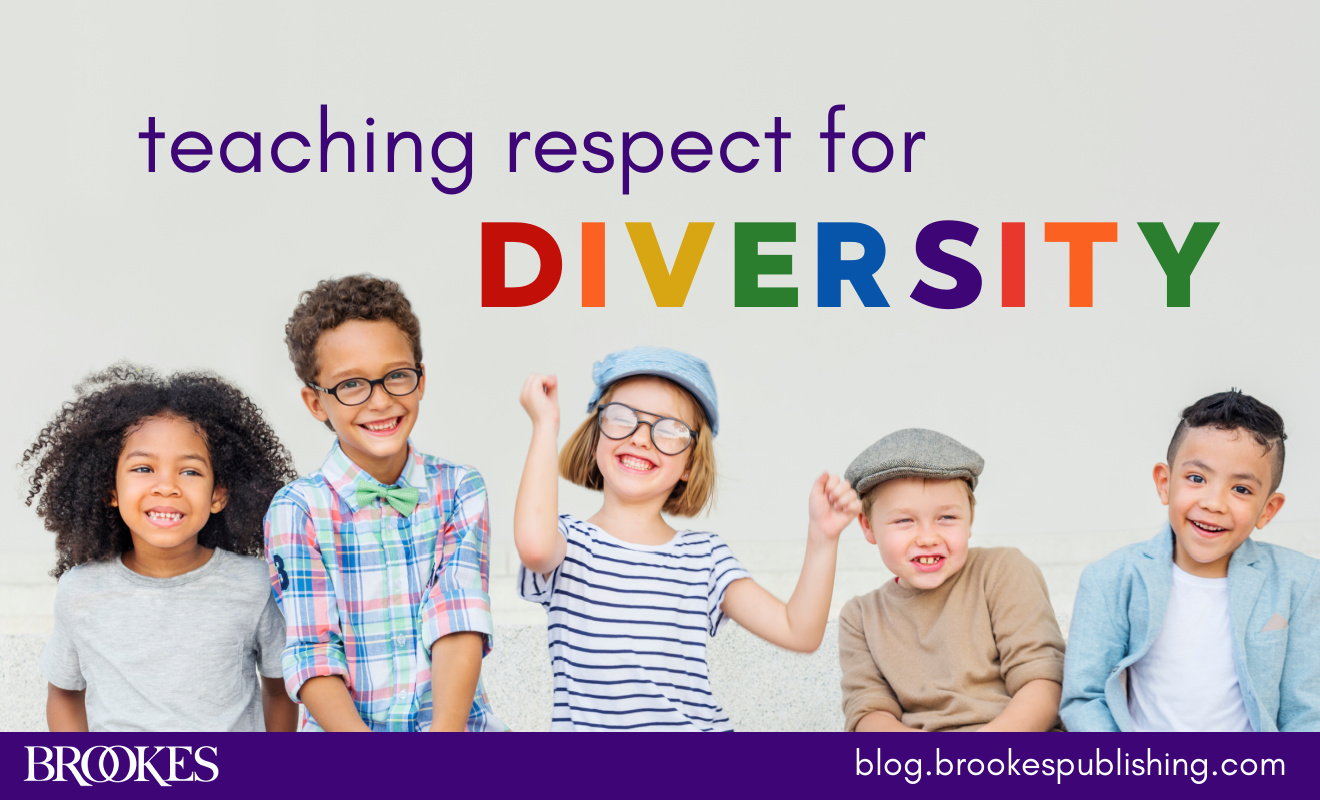
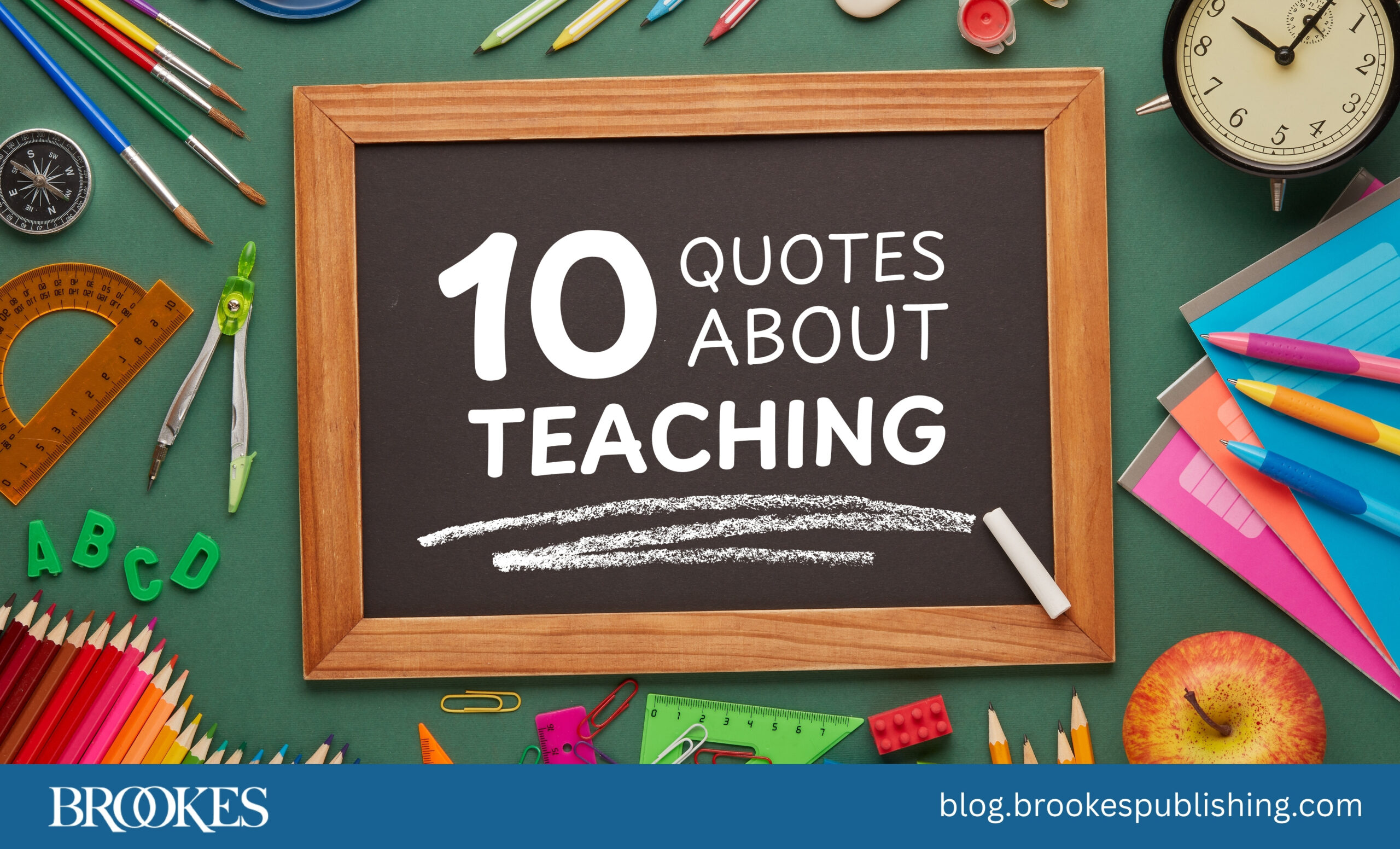

Write a Comment
Your email address will not be published. Required fields are marked *
Post a Comment